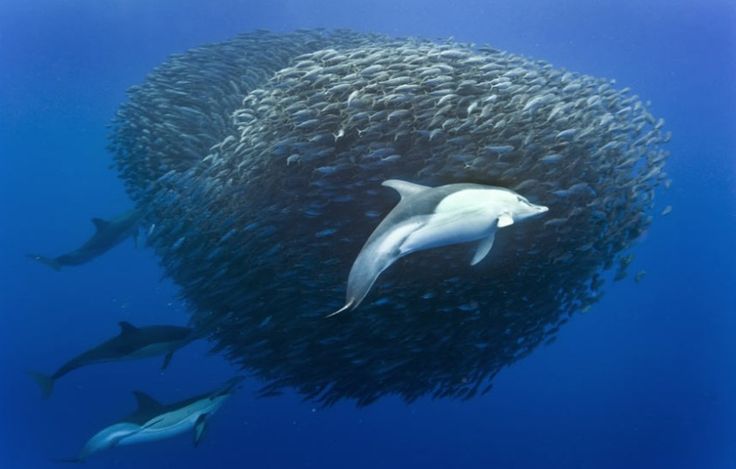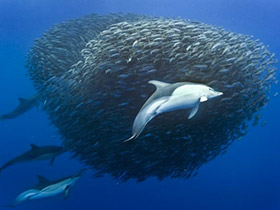
Most machines produce power by means of shafts that revolve at varying speeds around their own axes. Animals also produce power, although their working systems are very different, in muscles entirely surrounded by blood vessels and nerves. Thus, they move thanks to structures far more complex and perfectly design than machines. Living things' power-creating engines are their muscles, capable of expanding and contracting like backward and forward-moving levers.
One example of these engines can be seen in marine creatures, most of whose movement takes place in a single plane. You can envisage that motion by imagining the way fish swim in water. The interconnected vertebrae in the fish's backbone constantly turns to right and left, so that in order to swim, all a fish needs to do is to wave its tail.
Under normal conditions, when the tail turns in one direction, the fish's head should move in the opposite direction, propelled with the same force. Yet that never happens, because fishes' bodies have been created in such a way as to eliminate that effect.
At the same time, the water acts on the head with a vertical force during movement. All this gives rise to the movement of the head part of the fish being smaller to that of the tail. It is this difference that allows the fish to move in the water.
How quickly the fish moves depend on how rapidly the axis passing through its backbone moves to right and left. The speed increases as the fin nears the axis, and decreases as it moves away.
• An Optimally Efficient System
How efficient is this system? When we compare a waving tail and a submarine engine, what kind of results emerge?
Professor Richard Bainbridge of Cambridge University and his team set out to answer these questions with observations from an underwater camera.
Their observations of a fish that was still and calm revealed that when alarmed, it went into action at an amazing speed.
From a standstill, a small freshwater fish can move forward 10 body lengths in the space of one second. A 20 cm (8 inch) fish can achieve a speed of 8 kilometers (4 miles) per hour. Speed increases with the size of the fish. Professor Bainbridge observed that a 32 cm (one foot) long fish achieved a sustained speed of 13 kilometers (6.5 miles) per hour. That speed is directly related to the frequency at which the fish moves its tail. The more it waves its tail in a short period of time, the greater the speed.
In swimming, fish expend large amounts of energy. However, sudden acceleration is vitally important to them, since fish need sudden bursts of speed for hunting and to escape from predators.
From a stationary position, some small fish can reach their maximum speeds in as little as 1/20th of a second. In that time, they can produce a propulsive force up to four times their own weight.
To fully understand the significance of these figures, consider that sports cars can accelerate from 0 to 100 kilometers per hour in between four and six seconds, and need a great deal longer to reach their maximum speeds.
Another point is that. Fish exhibit these superior performances underwater and in some species, even against the current. Since the resistance of water is greater than that of air, clearly that the fishes' performance is a most superior one.


